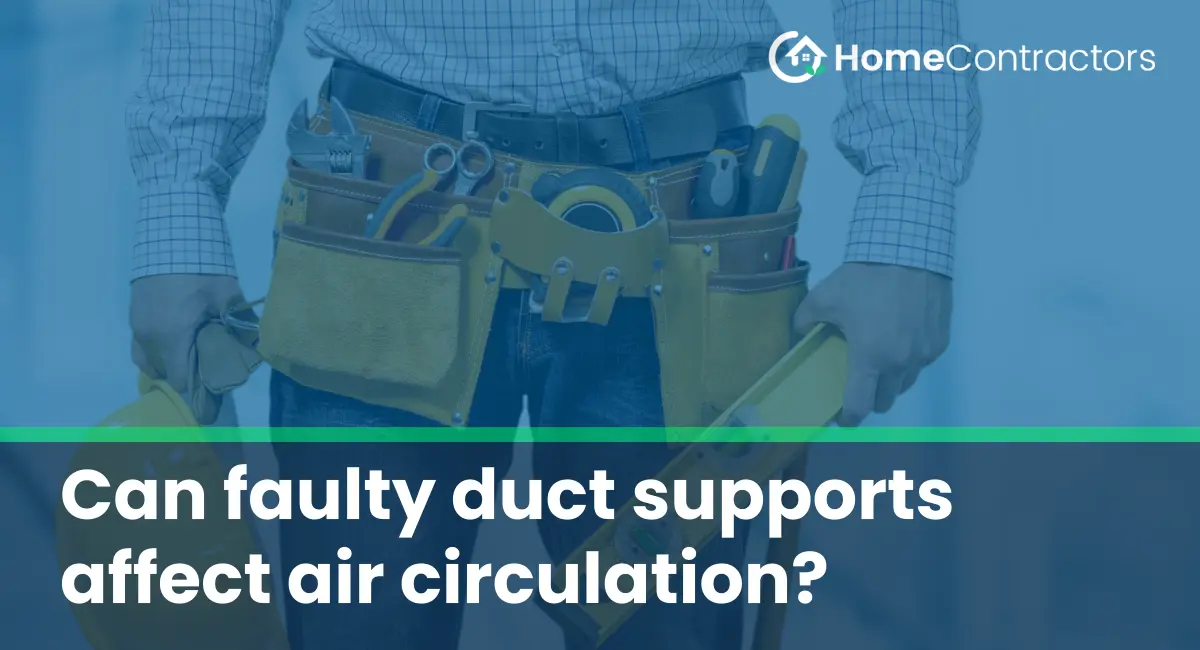Introduction: Understanding the Importance of Duct Supports
When it comes to the efficiency and performance of an HVAC (Heating, Ventilation, and Air Conditioning) system, proper air circulation is crucial. Air ducts play a significant role in delivering conditioned air throughout a building, ensuring comfort, and maintaining a healthy indoor environment. While many factors contribute to efficient air circulation, one aspect that is often overlooked is the role of duct supports. Faulty or inadequate duct supports can indeed have a detrimental effect on air circulation, leading to various issues and potentially requiring costly repairs. In this article, we will explore the importance of proper duct supports and discuss how faulty supports can impact air circulation.
The Role of Duct Supports in Air Circulation
Before delving into the impact of faulty duct supports, let’s first understand their role in ensuring proper air circulation within a building. Duct supports, also known as hangers or straps, are used to secure and support air ducts in their designated positions. These supports are essential for maintaining the integrity and alignment of the ductwork system, preventing sagging, and ensuring efficient airflow.
How Faulty Duct Supports Affect Air Circulation
A. Sagging Ducts: Reduced Airflow and Energy Loss
One of the primary consequences of faulty duct supports is sagging ducts. Over time, inadequate or deteriorating supports can cause the air ducts to sag or droop, compromising their alignment. Sagging ducts not only obstruct the smooth flow of air but also restrict airflow. This obstruction results in reduced air circulation and can lead to uncomfortable indoor temperatures. Additionally, sagging ducts allow conditioned air to escape into unconditioned spaces, resulting in energy loss, increased utility bills, and strain on the HVAC system.
B. Disconnected Ducts: Loss of Air Pressure
Another issue related to faulty duct supports is the disconnection of ducts from their designated positions. In certain situations, supports may become loose or deteriorate to the point where they fail to hold the ducts firmly in place, allowing for movement and disconnection. Disconnected ducts significantly impact air circulation by causing the loss of air pressure. Air leakage occurs when the disconnected ducts are no longer properly sealed, leading to inefficient airflow, reduced ventilation, and suboptimal temperature control.
Uneven Air Distribution: Comfort Issues
Faulty duct supports can also contribute to uneven air distribution throughout a building. When ducts sag or become disconnected, the airflow becomes uneven, causing certain areas to receive more conditioned air than others. As a result, some rooms or spaces may remain poorly conditioned, leading to discomfort and inconsistent temperatures. Uneven air distribution can also affect air quality and indoor humidity levels, potentially resulting in health issues or damage to sensitive equipment.
Signs of Faulty Duct Supports
In order to address the issues caused by faulty duct supports, it is important to be aware of the signs indicating their presence. Here are some common signs that can help identify faulty duct supports:
- Visible sagging or drooping of ducts
- Audible rattling or vibrating noises coming from the ductwork
- Uneven or inconsistent airflow in different areas of the building
- Drafts or hot/cold spots in certain rooms
- An increase in energy bills without any apparent cause
Solutions and Maintenance for Healthy Air Circulation
To prevent and address issues related to faulty duct supports, regular maintenance and inspections are crucial. Here are some recommended solutions:
- Schedule regular HVAC system maintenance to identify and address any potential issues with duct supports.
- Replace damaged or deteriorated duct supports promptly to prevent further damage or injury.
- Ensure that duct supports are securely fastened and properly aligned during installation or repairs.
- Install additional supports if required, especially in areas where the ductwork is prone to sagging or disconnection.
- Consider professional duct sealing and insulation to prevent air leakage and improve energy efficiency.
Conclusion: Prioritize Proper Duct Support for Efficient Air Circulation
Proper duct supports play a vital role in maintaining efficient air circulation within a building. Faulty or inadequate supports can lead to sagging ducts, disconnected ducts, and uneven airflow, resulting in reduced comfort, energy loss, and potential health issues. Regular maintenance, prompt repairs, and proper installation of duct supports are essential to prevent these problems and maintain a healthy indoor environment. By prioritizing proper duct support, you can ensure optimal air circulation, improve energy efficiency, and prolong the lifespan of your HVAC system.
